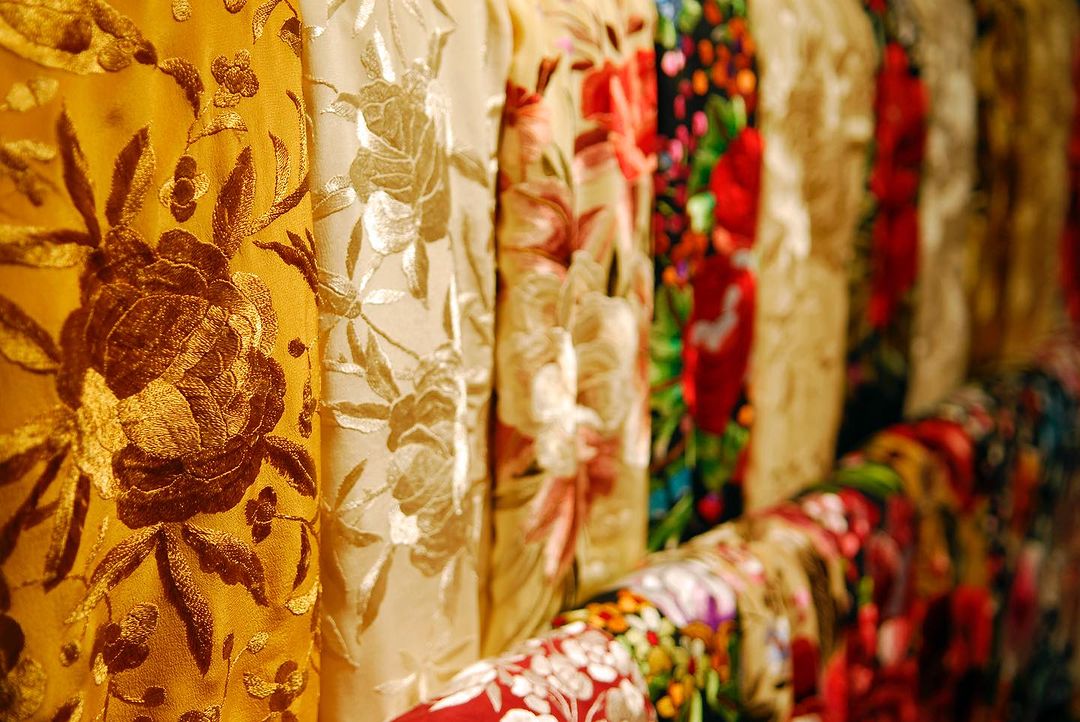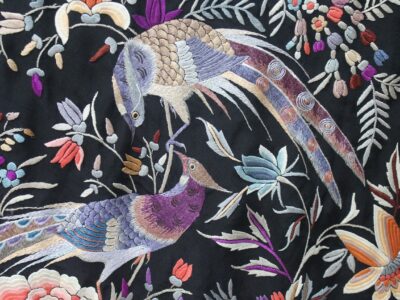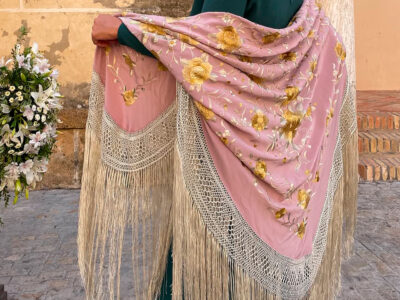Historia del Mantón de Manila
Adaptado y popularizado en España en el siglo XIX, el mantón refleja la influencia tanto de las técnicas chinas como de los gustos mexicanos, consolidándose como un accesorio distintivo en la cultura española.

Última modificación: 30 julio 2024
El mantón de Manila tal y como lo conocemos en la actualidad es una prenda de adorno femenino vinculada a la artesanía española. Su misma denominación se refiere a la procedencia de origen: la ciudad de Manila, la capital de la antigua colonia española de Filipinas.
Hasta que se inició su fabricación en España, la introducción del producto en nuestro país se debía al comercio que España mantuvo con América durante la etapa colonial. Un tráfico constante a través del que entraban, junto con otros lujosos enseres, tejidos y prendas chinas, vía Manila, desde el siglo XVI. Concretamente, los mantones se importaron hacia finales del siglo XVIII, popularizándose su uso en el XIX. Tomaron su nombre del destino final de la flota española en Manila, desde donde ésta retornaba a Sevilla.
Los primeros bordados en seda no se realizaron sobre mantones, sino en libros, tapices, estandartes y banderas, para posteriormente aparecer en vestidos, colchas, cojines y otros enseres de decoración doméstica. Los bordados sobre una prenda similar al mantón no aparecen hasta el siglo XII, cuando las mujeres de clase alta comenzaron a utilizar esta especie de chales.
Los bordados chinos eran muy apreciados, tanto por su finura y su delicado acabado como por su bella combinación de color, algo que entusiasmaba en la corte y en la alta sociedad española y mexicana donde llegaban en forma de vestidos, chales y pañoletas, indudables precedentes del mantón.
El comercio entre Europa y América abrió una nueva ruta a los mercaderes chinos, que encontraban en América el eslabón necesario para hacer llegar su mercancía hacia los mercados Europeos. Desde finales del siglo XVI, el tráfico mercantil oriental comenzó su flujo ascendente a través de Filipinas, hacia Europa. Manila se convirtió pronto en el centro receptor de las mercancías de los comerciantes chinos. Lo que parece indudable es que la prenda que hoy denominamos mantón de Manila es un atuendo femenino del que no tenemos noticias precisas sino a partir del siglo XVII. Su incorporación definitiva a las vestimentas de las españolas vino precedida por un largo recorrido en el tiempo: un viaje que partiendo de China, de donde procedían el tejido y las formas características de sus bordados, y donde ya se realizaban los chales, eran llevados hasta Manila, desde donde nuevamente eran enviados hacia tierras americanas.
Allí fueron adaptados primero a los gustos mexicanos, donde posiblemente evolucionarían y se enriquecerían hasta alcanzar las dimensiones y composición del actual mantón durante el siglo XVIII, iniciándose primero su uso en la colonia, para terminar, ya avanzado el XIX como accesorio de los trajes de las mujeres españolas. Pero México sólo fue un paso necesario en la configuración concreta y en la responsabilidad misma que determinaron las formas y la vistosidad definitiva de esta prenda. Dotada de estas cualidades recaló finalmente En España. Así aparecen en numerosos cuadros, ilustraciones y relatos literarios del siglo XIX, donde los mantones de Manila lucen en todo su esplendor, ya elaborados con estilos propios españoles.
Podemos afirmar rotundamente que su incorporación y su uso en la cultura española fue tan eficaz que a partir del siglo XIX y hasta el presente ha continuado. Los mexicanos influyeron notablemente en las formas actuales del mantón, dotándolos de un colorido que propició su uso definitivo y su popularización en España. Lo que es indudable es que ambos comercios se complementaron y ambas culturas han dejado su impronta en la composición de los mismos.
Fuente: Las bordadoras de mantones de Manila de Sevilla, Encarnación Aguilar Criado.


